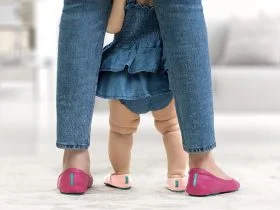Your daily choices add up. While sustainability may be a bit of a challenge for you right now, there is an increasing need to understand how your habits stack up. Rising global temperatures, overflowing landfills, and shrinking glaciers are significantly impacting planet Earth. Although this can be depressing, there are changes that you can make to create a positive, lasting impact in the world.
Wondering how to create a more sustainable everyday routine? Here are three simple swaps that you can start making today.
Reader's Roadmap
1. Eliminate Single-Use Products
As you go about your daily routine, think about the number of times you use a product and then throw it away. Disposable cutlery, plastic straws, and coffee cups are just a handful of single-use products that can be relatively easy to avoid. Avoid getting plastic silverware if you’re getting takeout from a restaurant. Instead, use your own utensils at home or carry a set of reusable utensils with you.
The same goes for coffee shops. Make it a habit to bring your thermos and ask the barista to use it instead of a plastic cup. Metal and glass straws aren’t only trendy, but they’re more environmentally friendly than the plastic alternatives. As you start to make these changes, you’ll recognize other areas where you can avoid single-use products.
In terms of your personal hygiene, opt for washable makeup pads instead of disposable cotton ones. If you wear a pad or liners, consider wearing period underwear instead. These innovative undergarments can absorb blood, pee, and even sweat — so they can be great for an intense workout too! Make a conscious effort to see how many single-use products you can eliminate from your daily routine. You may be surprised just how many items you used to haphazardly throw away.
2. Try Composting
While recycling any plastic or paper goods is important, composting can take your recycling game to the next level. Composting is a way to minimize trash output, breaking down organic materials into fertilizer. It also reduces personal food waste, which is a rising problem in America. The average household wastes about 6.2 cups of edible food every week. Composting is one way to help repurpose food that may have originally ended up in a landfill.
If you’re new to composting, it may seem more daunting than it really is. Purchase a compost container and place it in your kitchen, mudroom area, or garage. Leftover food scraps like banana peels, avocado pits, eggshells, used tea leaves, and yard waste are all fair game. Once the container is full, dump it in a shady place in your backyard. The area should be kept moist but not soggy. Turn the area regularly with a shovel or pitchfork to help aerate the area and speed up the decomposition.
If you’re in an apartment or townhome without access to a backyard, no worries. You can still compost at home. You may want to keep the food scraps in a bin in the fridge since you won’t be getting rid of the waste as frequently. Look up local composting centers or see if a nearby farmer’s market accepts compost. If you skip a week or are traveling, most compost can be frozen.
To make it even easier, some major cities are mandating composting city-wide. As an example, New York City recently required residents to compost food scraps and yard waste through curbside composting. Any residential buildings that fail to adhere to this will be fined. Other cities with similar mandates include San Francisco, Seattle, and Portland.
3. Avoid Excess Food Packaging
The average American throws out 4.9 pounds of trash every day! One of the main culprits of all this waste is excess food packaging. Food packaging alone is increasing as families are turning to more processed, packaged food items. Boxed lettuce, plastic milk containers, yogurt cups, and bottled water are some mainstays in most homes. However, there are ways to avoid excess packaging from food.
For instance, switch from tea bags to tea leaves and trade in coffee pods for ground coffee. Not only do these alternatives tend to taste better because they’re fresher, but they don’t contain any packaging. If you can, go to the farmer’s market to shop for local produce, meat, and dairy items. The amount of packaging will be minimal, especially if you bring reusable produce bags. For dairy, see if there is a bottle trade-in program to reduce waste.
Other store-bought items like chips, crackers, and candies are also common offenders. Instead of buying individually packaged food items for your kids’ lunchboxes, buy the item in bulk size. Assemble pre-portioned servings using silicone bags or glass containers, which can be washed and reused.
Conclusion
Similar to starting a new workout routine, making these sustainable swaps will take some time and effort. It can be helpful to lay out a plan or vision for how you want to incorporate these swaps. Leaving your reusable bags in your car or by your garage can be the reminder you need before heading out of the house. Moving when you do your grocery shopping to a day where there is a farmer’s market can give you the nudge to check it out.
So will you be able to make all of these swaps overnight? Probably not. But that shouldn’t deter you from starting small and seeing what you can do. You’ll be shocked to see how easily these changes become normal parts of your routine. Encourage your family members or roommates to get on board too. Being sustainable together can be more motivating and can be a helpful lesson to young children who tend to mimic whatever their parents and caregivers do!







Leave a Reply
View Comments